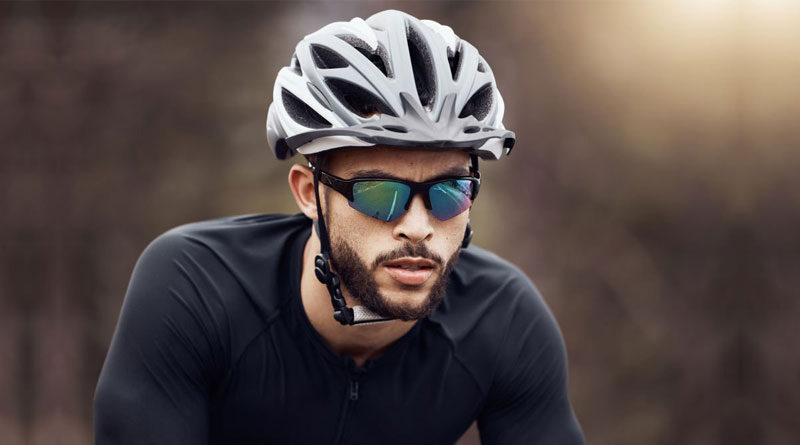Road vs. Mountain Bike Helmet: A Comparison
The brain is said to be the most important organ because it controls all the functions of the body. Injury to this organ can be fatal or can leave a person crippled for the rest of his life. A bike helmet is an important and mandatory part of riding gear. We advise all riders to wear adequate safety gear, especially a helmet, for safe riding. There are different types of helmets for different types of riding. Our focus is on road and mountain bike helmets in this article. Do you need a road helmet for road riding and a mountain bike helmet for mountain bike riding? What are the differences between the two types and why do they matter? This article will help you find out.
Overview
There is a reason why there are separate helmets for road and mountain bike riding. Both are made with specific features useful to their respective riding styles. Here is an overview of the differences between the two types of helmets.
Road Bike Helmets
Riding on the road requires the rider to maintain high speeds. Aerodynamics and lower weight are essential in road riding. Road bike helmets are made with those requirements in mind. They have a fluid drop-like design to make them more aerodynamic. These helmets are made of lighter materials with only essential coverage to keep the weight as low as possible. They have more vents for more ventilation because constant pedaling for long periods can raise the body temperature. These helmets help make the rider faster while using less energy and protecting the head as well.
Mountain Bike Helmets
Mountain bike helmets are made to protect the head against boulders, sharp branches, and pointy rocks. That is why mountain bike helmets provide more coverage. They can be half-face like the POC Tectal or full-face like the BELL Super 3R MIPS for gravity riding. Over-the-ear protection in some mountain bike helmets like the Fox Racing Droprame Pro provides protection to the jawline as well.
Mountain bike helmets have visors or peaks for better protection from low-hanging branches and from sun and rain. The peak also gives them their distinguished look. They have fewer vents to increase structural and because mountain terrains are dusty and vents accumulate more dirt. Having more coverage means that mountain bike helmets are heavier.
What Type Provides Better Protection?
In 2019, 30 helmets were subjected to STAR protocol testing. STAR protocol is a protocol for a biomechanical-based helmet evaluation. It was found that shell thickness, vent placement, radius, and curvature were the factors that influenced the effectiveness of the helmet. Surprisingly, The study found that road helmets are better at protecting the brain from concussions. The reason is that the less rigid polycarbonate shell of a road helmet breaks easily on impact. The crack on the initial impact spreads the energy across the whole shell before compressing the foam liner. Similarly, the smoother surface of a road helmet slips and slides easily over hard surfaces significantly reducing the force of the impact. MIPS helmets performed better than non-MIPS helmets in this test. But none of the helmets were found to prevent a concussion entirely.
That being said, the differences in protection were not huge. Besides, both types of helmets have to pass the same tests meaning they provide almost the same level of protection. Similarly, both types of helmets feature the same safety technologies like MIPS, Koroyd, and WaveCell to name a few. These technologies are also gradually replacing the traditional EPS foam found in most bike helmets. The difference in protection is due to the difference in the environment they are made for. On the road, a rider is most likely to have just a single impact, double at most. But a mountain biker falling from a cliff can have multiple impacts coming down, hence, the increased integrity and coverage.
Safety Standards
Road and mountain bike helmets have to pass strict safety standards depending on the region. In Europe, the helmets have to comply with European standards while in America, there are many standards. But the one by the American government is issued by the Consumer Product Safety Commission (CPSC).
Bike helmets must comply with the EN-1078 standard for adults and the EN-1080 standard for children. While in America bike helmets must comply with CPSC-1203 standards. Other American standards are Snell, ANSI, and ASTM. Downhill bike helmets have to comply with the ASTM-1952 standard. There was a time when European standards were said to be more stringent than American standards. But now, we are not so sure.
Can I use a Road bike helmet for mountain biking and vice versa?
A bike helmet not only provides protection but also affects the performance of the rider. You can use a road bike helmet for mountain biking but it is not recommended. Road bike helmets do not provide as much coverage required during mountain biking, especially for downhill riding. They are not made for repeated impacts that a mountain biker might experience while falling from hills. But road bike helmets are lightweight and more ventilated which can help when going uphill. These helmets can also be beneficial for gravel riding where a lighter and more aerodynamic design reduces the power required for pedaling.
Mountain bike helmets can be viewed as all-terrain helmets. They have almost the same features as road bike helmets. But there are some downsides to using a mountain bike helmet on the road. As you can guess, a mountain bike helmet isn’t as aerodynamic as a road bike helmet. It will generate more drag during the ride. The heavier weight of a mountain bike helmet serves a purpose on uneven ground. Heavier weights have more inertia and are difficult to move. A heavier mountain bike helmet reduces wobble when riding on a rough surface. But it can strain the neck while riding on straight long roads.
Related Article: Can you put mountain bike tires on a road bike?
Conclusion
Helmets are required for protecting the head and the brain which are important areas in the body. All riders should comply with safety standards and must wear a helmet for riding safely. Road bike helmets and mountain bike helmets are developed with features specific to their respective riding styles and should be used in their respective conditions for optimum performance and safety. Road bike helmets have been found to provide better protection than mountain bike helmets. But the difference is not much. Both types of helmets have to pass the same safety standards so both provide the same level of safety.




